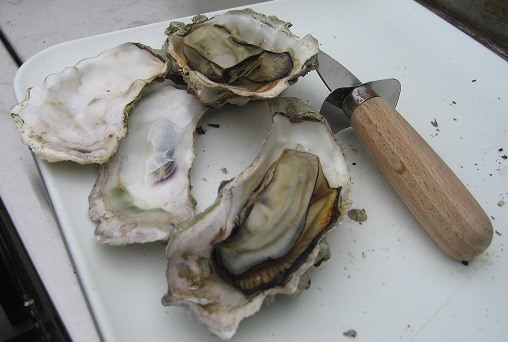I recently had the privilege of enjoying an oyster bar with four varieties right here in Sequim. It was set up for a celebration of the re-opening of shellfish beds in Dungeness Bay by the state Department of Health — a status change owing to vastly improved water quality.
Back in the 1990s we could buy a jar of fresh oysters grown in that patch of tidelands adjacent to the Jamestown S’Klallam Tribe’s Oyster House, now Dungeness Landing County Park. But the operation was shut down at the turn of the century because concentrations of fecal bacteria in Dungeness Bay indicated that those oysters may not be safe to eat.
Fifteen years later — and a lot of fixed septic systems, piped ditches, public outreach and water testing — and it’s time to share some oysters in celebration! (The local Olympia variety grown by the tribe is uniquely tiny but worth trying if you get a chance!)
The Puget Sound Partnership sponsored the celebration of this success story and the tribe and Taylor Shellfish brought the fresh oysters. PSP is a state agency originally formed by the governor in 1985 with the mission to clean up Puget Sound — a Northwest version of the “Save the (Chesapeake) Bay” campaign.
The upgrade in Dungeness Bay, which allows commercial shellfish growing to resume, is the result of perseverance by the Clean Water Work Group — local entities with a shared mission to clean up Dungeness Bay.
The PSP director, Sheida Sahandy, and staff came to Sequim to say thank you for good progress and did a great job of recognizing local efforts.
Accepting an award for the Jamestown Tribe’s major role in the upgrade was Tribal Council member Theresa Lehman. Theresa expressed gratitude to the local partners working to restore water quality and described a tribal tradition to think ahead seven generations.
As a student of the geologic time scale, I really appreciate this way of thinking — and so does Jane Iddings, the blogger that started “Water Matters.”
Jane’s first column appeared in early October when our region was deep in the worst drought on record. It was an opportune time to raise awareness about water supplies and conservation. Now that we’ve had a few gully washers and snow is blanketing the mountains, do we really still need to talk about water? Jane’s last column on snowpack explained: yes.
Watch this space for more conversation about Sequim’s original claim to fame – water. Whether it’s short-term drought or long-term melting of glaciers, a seven-generation outlook is a good way to go.
Geek moment:
Snow depth in the upper Dungeness basin SNOTEL station measured at the time of Jane’s Nov. 18 column on the topic = 7 inches. Nov. 25 = 11 inches.
Ann Soule is a licensed hydrogeologist working on water quality and quantity concerns in the Dungeness watershed since 1990. She now works for the City of Sequim.
Columnist Jane Iddings is handing off her Water Matters column to Ann Soule this week. Iddings, who along with being a newspaper columnist worked as a retired attorney/mediator, teacher and social policy analyst, wrote a blog about Sequim water (sequims-water.com). She and her husband recently decided to return to Arizona — their home state for decades while they moved/traveled all over the world.



